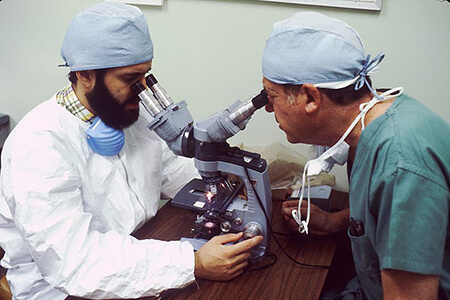This is a lesson summary. The full lesson can be viewed by purchasing an online course subscription.
Learning Objective
In this lesson we will learn about the different types of microscopes and how microscopy has advanced biological understanding.
Learning Outcomes
By the end of this lesson you will be able to:
- Compare light microscopes and electron microscopes.
- Compare compound microscopes and stereo microscopes.
- Compare scanning electron microscopes and transmission electron microscopes.
- Calculate the total magnification of a light microscope.
- Discuss how the development of microscopes has led to many important scientific discoveries.

(Image: ckstockphoto, Pixabay)
Lesson Summary
- A microscope is a device that enables the observation of objects that are too small to be seen with the naked eye.
- The development of microscopes has enabled scientists to view previously unseen microscopic objects, leading to many important discoveries about cells and microorganisms, and leading to the development of the cell theory.
- The two main types of microscopes are light microscopes and electron microscopes.
- Light microscopes use light rays to view objects.
- They include compound microscopes and stereo microscopes.
- Electron microscopes use beams of electrons to view objects.
- They include scanning electron microscopes and transmission electron microscopes.
- Compound microscopes (monocular microscopes and binocular microscopes) are used for viewing thin sections of specimens mounted on a microscope slide.
- They produce two-dimensional images.
- Compound microscopes consist of the following components: eyepiece (ocular lens), objective lens, coarse focus knob, fine focus knob, stage and stage clips, stage controls, lamp and arm.
- Stereo microscopes are used for viewing larger objects.
- They produce three-dimensional images.
- Stereo microscopes consist of the following components: eyepiece (ocular lens), objective lens, focus knob, zoom control, stage plate and stage clips, lamp and arm.
- Scanning electron microscopes (SEMs) produce images of the surface structure of objects.
- Transmission electron microscopes (TEMs) produce images of the internal structure of objects.
- The magnification of a microscope is a measure of how much bigger an image is than the real object.
- The magnification of a light microscope is calculated by multiplying the magnification of the ocular lens and the objective lens.

(Image: Pikrepo)
(Header image: Belkin & Co, Adobe Stock)
